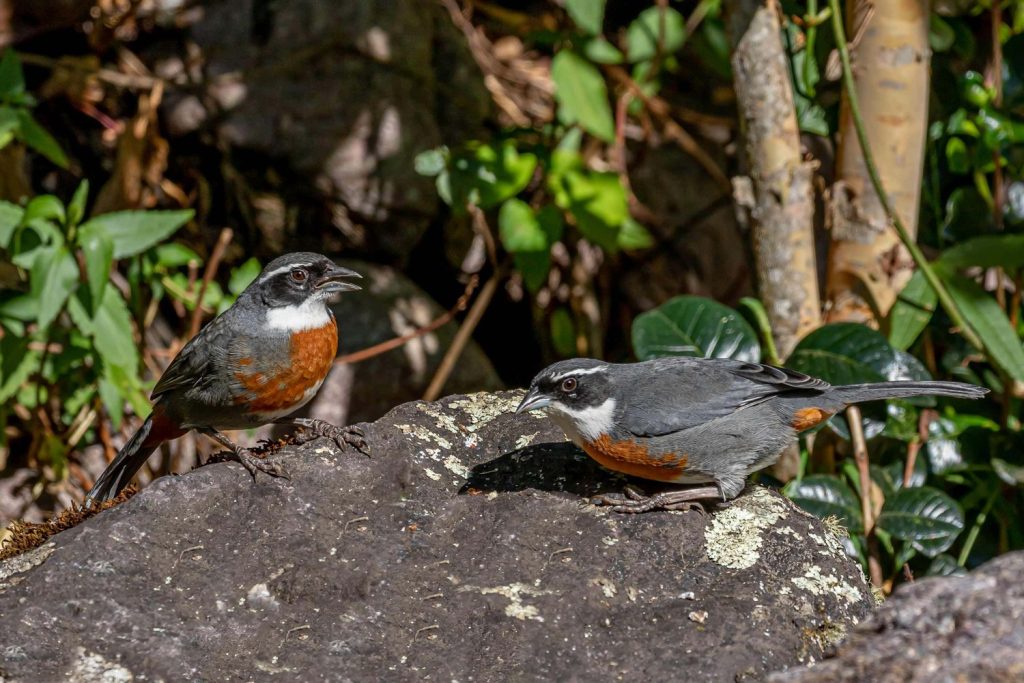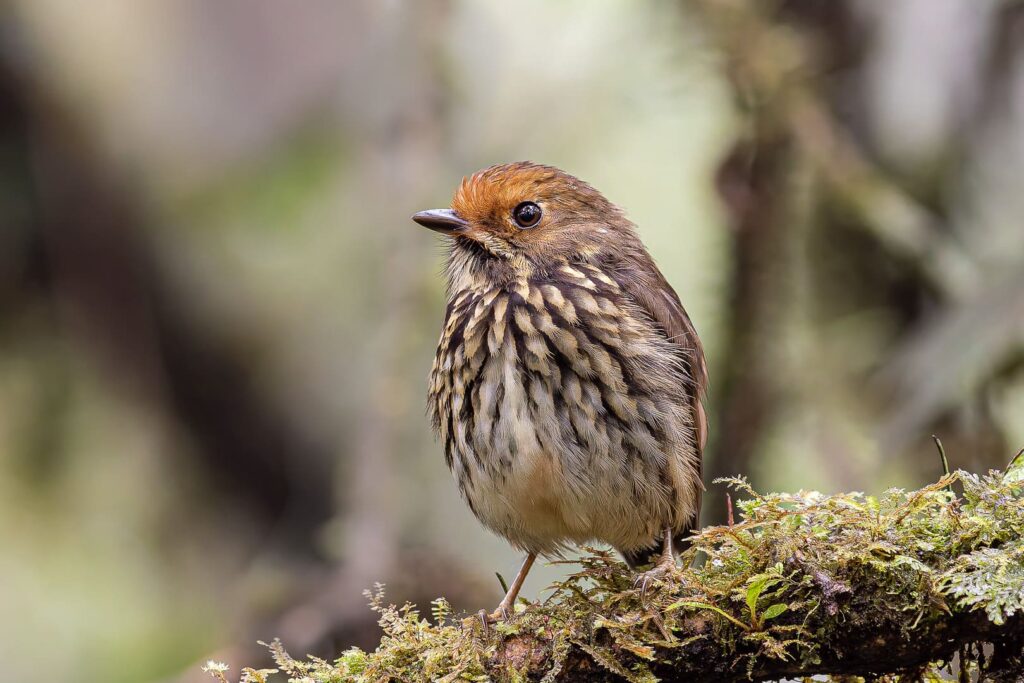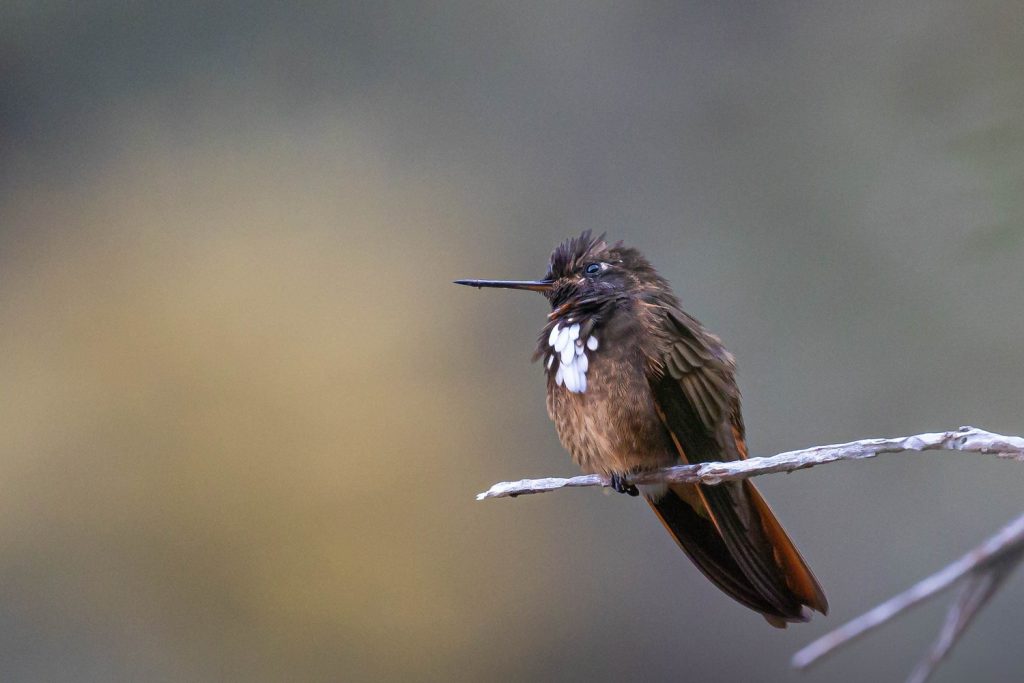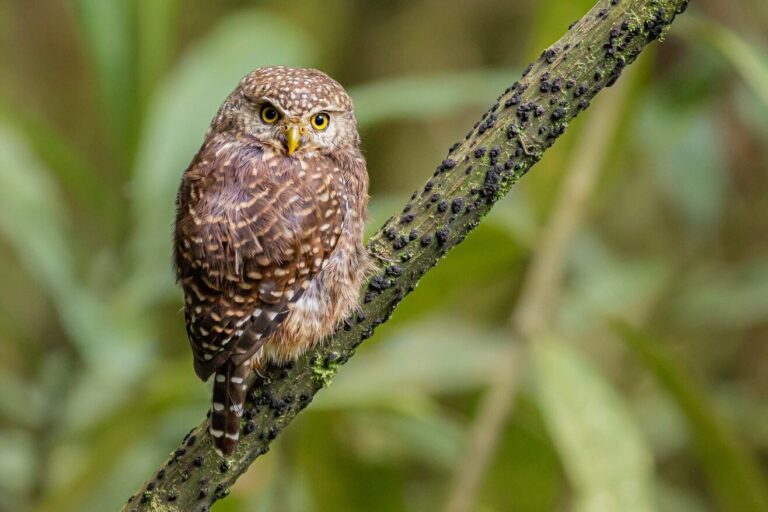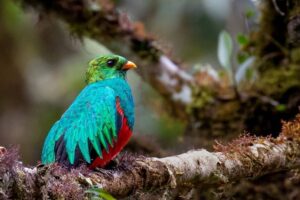BIRDING VILCABAMBA MOUNTAIN (And Abra Malaga)
- From
- Trip Type
- Activities
- Trip Duration
- Group Size
- Habitats Covered
- Trip Outline
- Itinerary
- Trip Includes
- Gallery
- FAQ
Trip Outline
VILCABAMBA & ABRA MÁLAGA: ENDEMIC BIRDING IN PERU’S MOST SECRETIVE MOUNTAINS
Explore a little-known stronghold of Peruvian endemics on this 4-day birding expedition through the legendary Vilcabamba range and Abra Málaga. Designed for experienced birders and serious listers, this route targets rare, range-restricted, and localized specialties that are often missed on broader tours.
From the puna grasslands above 4,000 meters to hidden Polylepis patches and unspoiled cloud forests, this tour brings you face-to-face with some of Peru’s most spectacular and elusive birds—while offering a glimpse into a region steeped in Inca resistance history.
🗺️ Why Choose Birding in Vilcabamba & Abra Málaga?
This short but intense birding journey grants access to one of the least-explored and endemic-rich regions in Peru. The Vilcabamba Mountains, once a refuge of the last Inca dynasty, remain biologically understudied and culturally important—making them an ideal destination for birders seeking something truly different.
Recent road improvements now allow birders to comfortably explore isolated slopes and elfin forests once reachable only by multiday treks. You’ll bird across a wide elevational gradient, from puna grasslands and glacial wetlands to Andean cloud forests and Polylepis groves—each with its own suite of rare species.
🦜 Target Endemics and Highlights
This Vilcabamba birding tour focuses on regional endemics, many of which are nearly impossible to see elsewhere. Target species include:
Vilcabamba Range Endemics
Vilcabamba Tapaculo, Vilcabamba Thistletail, Vilcabamba Spinetail, Vilcabamba Inca, Apurímac Starfrontlet, Johnson’s Tody-Flycatcher (isolated population), Red-and-white Antpitta (4-note call form), Yellow-scarfed Tanager
Abra Málaga Specialties
Marcapata Spinetail, Urubamba Antpitta, Parodi’s Hemispingus, Inca Wren, Unstreaked Tit-Tyrant, Creamy-crested Spinetail, Cuzco Brushfinch, Junin Canastero, Taczanowski’s Tinamou, Diademed Tapaculo, Plushcap
Puna and Glacial Wetlands
Royal Cinclodes (critically endangered), Gray-breasted Seedsnipe, Blue-mantled Thornbill, Boulder Finch, Glacier Finch, Andean Goose, Andean Lapwing
Polylepis & Highland Forest
White-browed Tit-Spinetail, Tawny Tit-Spinetail, Stripe-headed Antpitta, Giant Conebill, White-tufted Sunbeam, Great Sapphirewing, Chestnut-breasted Mountain-Finch
🚐 A Rare Opportunity with Comfortable Access
Although remote, this Vilcabamba & Abra Málaga birding route is now accessible via road, eliminating the need for strenuous hikes or pack animals. With two nights at basic hotel in the Vilcabamba range and a final stay in a 3-star superior hotel in Ollantaytambo, the trip maintains a balance of access and comfort.
The tour also includes expert local guides who specialize in these under-birded regions—maximizing your chances of seeing the rarest species.
💸 A Megas Tour in Mini Format
Think of this as a mini Megas Tour: a compact, laser-focused itinerary that delivers exceptional birding value in just 4 days. Whether you’re filling gaps in your Peru list or chasing lifers at the edge of scientific knowledge, this trip is for you.
We can also adapt this itinerary to connect with longer routes such as Manu Road, the Sacred Valley, or Northern Peru.
Itinerary
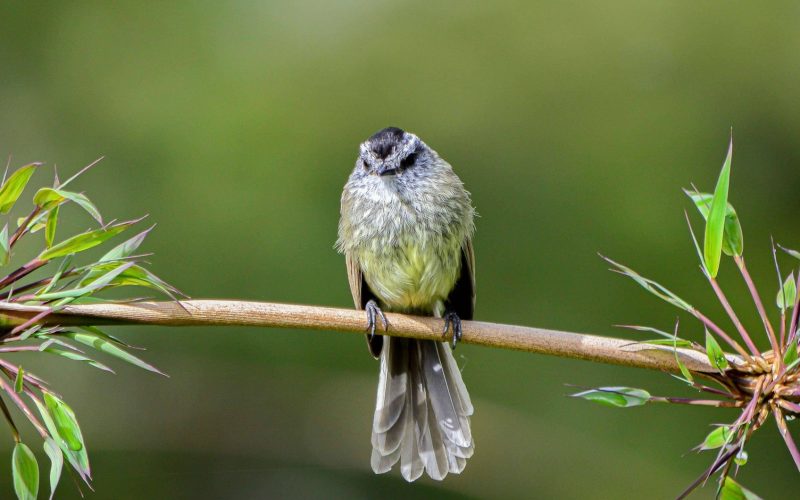
Birding Abra Málaga: Endemics Across the Andes
Once considered by Zimmer "The finest field birder / ornithologist that the world had ever seen", Ted Parker, showed a high preference for this site that shows a wide gradient habitat where the birds are rare elsewhere. Early morning, after 2 hours of car ride, we will start birding in the east slope of the cordillera covering Puna, Elfin and Cloud forest searching speciallities such as Marcapata Spinetail(Endemic), Urubamba Antpitta (E), Red-and-White Antpitta (E), Parodi´s Hemispingus (E), Unstreaked Tit-tyrant (E), Inca Wren (E), Cuzco Brushfinch (E) Marcapata Spinetail (E), Junin Canastero (NE), Line-fronted (Urubamba) Canastero (NE), Taczanowski´s Tinamou, Diademed Tapaculo, Amethist-throated Sunangel, Scaled Metaltail, Black capped Hemispingus, Scarlet-Bellied Mountain-Tanager, Plushcap, Yellow-Billed Cacique, Among others.
Lunch will be at the field and we will keep driving to the Vilcabamba isolated mountains.
Night in Vilcabamba (basic lodging).
Endemic Birding in the Vilcabamba Mountains
Today we bird one of the most remote and under-explored areas in southern Peru — the Vilcabamba Mountains, a range rich in endemism and scientific intrigue. These isolated cloud forests have only recently become accessible and remain one of Peru’s most pristine birding frontiers.
After an early breakfast, we’ll head toward the Vilcabamba pass, home to some of the rarest birds in the Andes. Key endemics found here include: Vilcabamba Tapaculo (E), Vilcabamba Thistletail (E), Vilcabamba Spinetail (E), Vilcabamba Inca (E), Apurímac Starfrontlet (E). In the ecotone between forest and open areas, we’ll look for:
Johnson’s Tody-Flycatcher (E), Creamy-crested Spinetail (E), Urubamba Antpitta (E), Yellow-scarfed Tanager (E)
Of particular interest is the Red-and-white Antpitta (E), whose local population shows distinct features: a 4-note call (versus the typical 3-note) and a pale yellow belly. This unique vocal and plumage variation suggests the presence of a new undescribed species — the “Vilcabamba Antpitta?”
The forest here is still largely unexplored, and every visit offers the possibility of discovering something new. With sharp local guides and experienced ears, we’ll be listening for surprises in one of the most exciting birding areas of the Central Andes.
🛏️ Overnight in Vilcabamba (basic lodging)
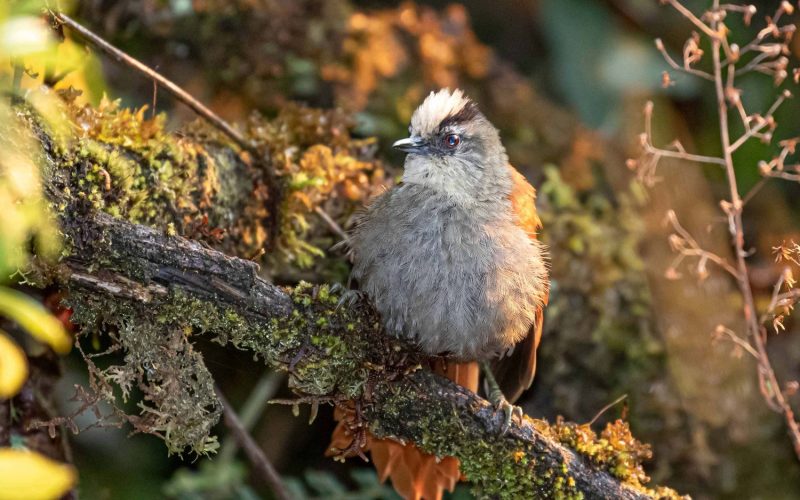

Royal Cinclodes and High Andean Endemics
Today we ascend above 4,000 meters into the remote puna grasslands of the Vilcabamba Mountains—a dramatic and windswept landscape home to some of the rarest high Andean birds.
Our main target is the Royal Cinclodes (E), a Critically Endangered species with an estimated global population of fewer than 250 mature individuals. Though extremely rare elsewhere, this site in Vilcabamba offers one of the best chances in the world to see this elusive bird.
Other species that thrive in these extreme conditions include:
Gray-breasted Seedsnipe, Blue-mantled Thornbill, Andean Goose, Glaciar Finch, Boulder Finch
This alpine habitat, dotted with cushion plants and fed by glacial meltwaters, supports a surprising diversity of birdlife. The proximity to tropical glaciers creates microhabitats that sustain rare and range-restricted species year-round.
The puna ecosystem offers a powerful contrast to the forests we explored earlier, highlighting the adaptability of birds across dramatic elevational gradients.
🛏️ Overnight at Ipal Eco-Lodge
Polylepis Forest Birding in Thastayoq
Today we explore the high-elevation Polylepis forests of Thastayoq, one of the few Andean communities actively engaged in reforestation and conservation through ecotourism. These ancient woodlands represent one of the most endangered habitats in the Andes—and are a sanctuary for some of Peru’s rarest and most range-restricted bird species.
After breakfast at the lodge, we begin birding the surrounding roads and gardens, with good chances for: Masked Fruiteater (E), Green-and-white Hummingbird (E), Swallow-tailed Hummingbird, Red-crested Finch, , Two-banded Warbler.
We then head toward Abra Málaga, where we begin a long, scenic downhill hike into a hidden Polylepis patch—prime habitat for high-Andean specialists like: Tawny Tit-Spinetail, White-browed Spinetail (E), Ash-breasted Tit-Tyrant (NE), Puna Tapaculo, Stripe-headed Antpitta, Giant Conebill, Royal Cinclodes, Blue-mantled Thornbill, Purple-backed Thornbill and we have some chances for Andean Condor.
After a picnic lunch, we continue to the Peñas Ruins, where our targets include: Creamy-crested Spinetail (E), Chestnut-breasted Mountain-Finch (E), White-tufted Sunbeam (E), Great Sapphirewing.
We return in the late afternoon to Ollantaytambo, a charming Inca town in the Sacred Valley.
🛏️ Overnight in Ollantaytambo – Pakareqtambo Hotel (3★ Superior)
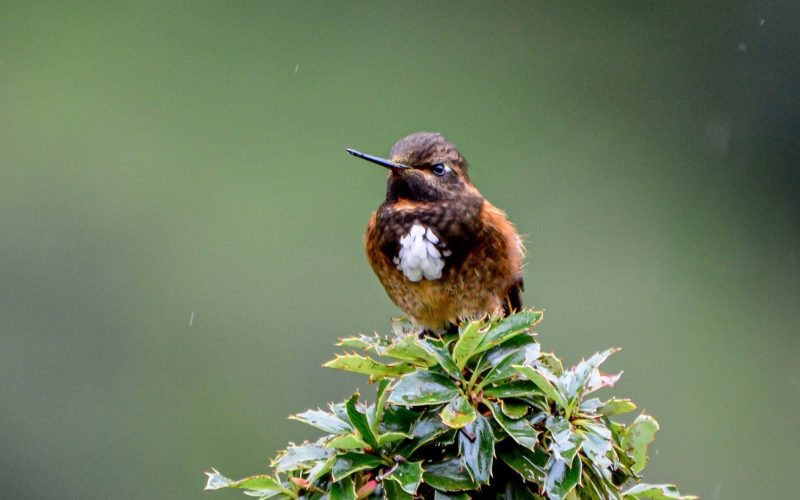
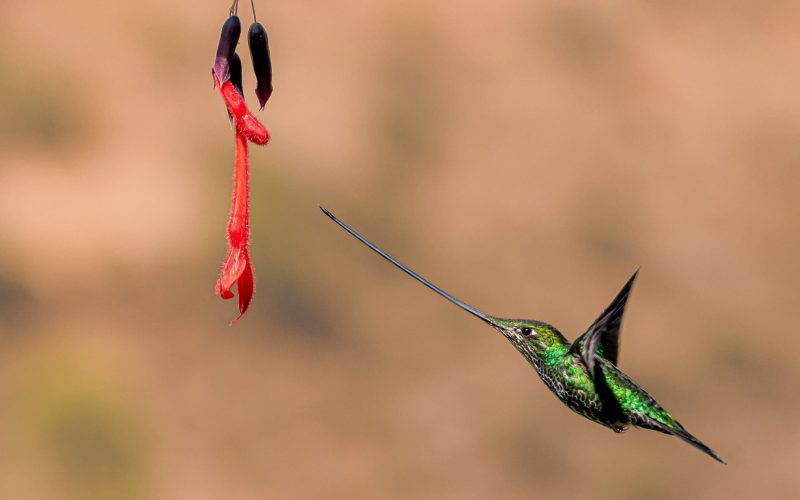
Polylepis Forest Birding in Thastayoq
We begin the day with a visit to Ensifera Camp, a beautiful hummingbird garden named after its star visitor: the Sword-billed Hummingbird (Ensifera ensifera), one of the most iconic species of the Andes. The feeders here also attract: Shining Sunbeam, Tyrian Metaltail, White-bellied Hummingbird, Violet-fronted (Cuzco) Starfrontlet.
Next, an additional visit on the way, Moray, a spectacular pre-Hispanic agricultural laboratory built by the Incas. Its concentric terraces showcase the extraordinary science and architectural knowledge of ancient Peru.
In the afternoon, we head to the lakes of Chinchero, high-altitude wetlands that host a variety of waterbirds and Andean specialties: Silvery Grebe, Puna Teal, Yellow-billed Teal, Andean Duck, Andean Flicker, Puna Ibis, Andean Lapwing, Andean Goose, Short-billed Pipit. During the boreal winter, these wetlands also attract migratory shorebirds such as: Pectoral Sandpiper, Wilson’s Phalarope, Baird’s Sandpiper, Upland Sandpiper
We return to Cusco by mid-afternoon, concluding this unforgettable birding in Vilcabamba Mountains through one of the most endemic-rich regions of the Andes.
🛬 End of Services – Arrival in Cusco




